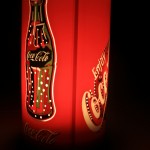The famous Coke vs. Pepsi taste wars were a great way to prove that a brand image can impact the taste of something. Did you know when a blind taste test occurred (meaning the participant was not told which beverage Coke or which was Pepsi) the results were split? Just as many people favored Coke as favored Pepsi. When the participants were told which product they were drinking, the results changed dramatically. Coke was much preferred over Pepsi, with two-thirds of people favoring Coke, and only 1/3 favoring Pepsi.
What causes this gap? It is due to the solid reputation Coke has cultivated over the course of 100 plus years, reinforced through advertising and marketing that portrays a happy, comforting, and positive message. When a person knows they are drinking Coke, these marketing messages have insinuated themselves into the human nervous system so deeply, they actually influence a persons taste preferences!
Coke’s positive message is solidified by its appeal to the senses through marketing. The music they use in their commercials, like “I’d like to buy the world a Coke” the feel of the Coca-Cola bottle, and the emotion their marketing messages display, like the journey through a vending machine in the 2006 Super Bowl ad. Even the guerrilla marketing campaigns Coke engages in, as shown in this video. These marketing messages have helped uphold the brand image of Coca-Cola. The beverage has benefited by maintaining a leading position in the soft-drink market through the sensory marketing materials used.
Which do you prefer- Coke or Pepsi?

